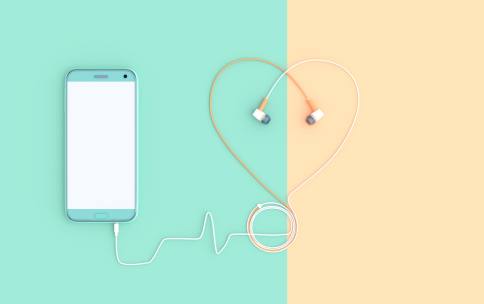
Smartphones are a part of our everyday lives, connecting people and information from across the globe. With the increased ease of access to smartphones, voice recordings from these everyday devices may also provide an opportunity to screen for health conditions such as speech disorders, respiratory diseases, and neurological disorders. According to a new study by Yael Bensoussan, M.D., and her team, pairing a smartphone with a low-cost headset offers a practical and readily available option for researchers and clinicians to obtain voice data and has promising potential for research and improving clinical care.
Dr. Bensoussan leads an NIH Common Fund Bridge to Artificial Intelligence (Bridge2AI) Precision Public Health (Voice AI) project that aims to establish a large database of 30,000 voices that can be used with artificial intelligence (AI) and other machine learning (ML) technologies to answer key clinical questions about health conditions connected with human voice. To do this, the researchers first set out to identify a cost-effective yet reliable recording device.
To examine the quality of devices for data collection, the project team tested a combination of microphones and headsets with both iPhone and Android smartphones to identify the best low-cost method to obtain high quality voice recordings. They tested each combination with adults and children across four noise environments and found that a smartphone with an inexpensive headset performed the best. This setup ensured reliable microphone placement and allowed users to be hands-free while reading instructions for the recording. The researchers plan to expand their study to more participants to account for additional differences in vocal tone and pitch, to test the best microphone distance for recording, and to ensure their findings can be replicated.
Reference: Awan SN, Bahr R, Watts S, Boyer M, Budinsky R; Bridge2AI Voice Consortium; Bensoussan Y. Validity of Acoustic Measures Obtained Using Various Recording Methods Including Smartphones With and Without Headset Microphones. J Speech Lang Hear Res. 2024 Jun 6;67(6):1712-1730. doi: 10.1044/2024_JSLHR-23-00759. Epub 2024 May 15. PMID: 38749007.


